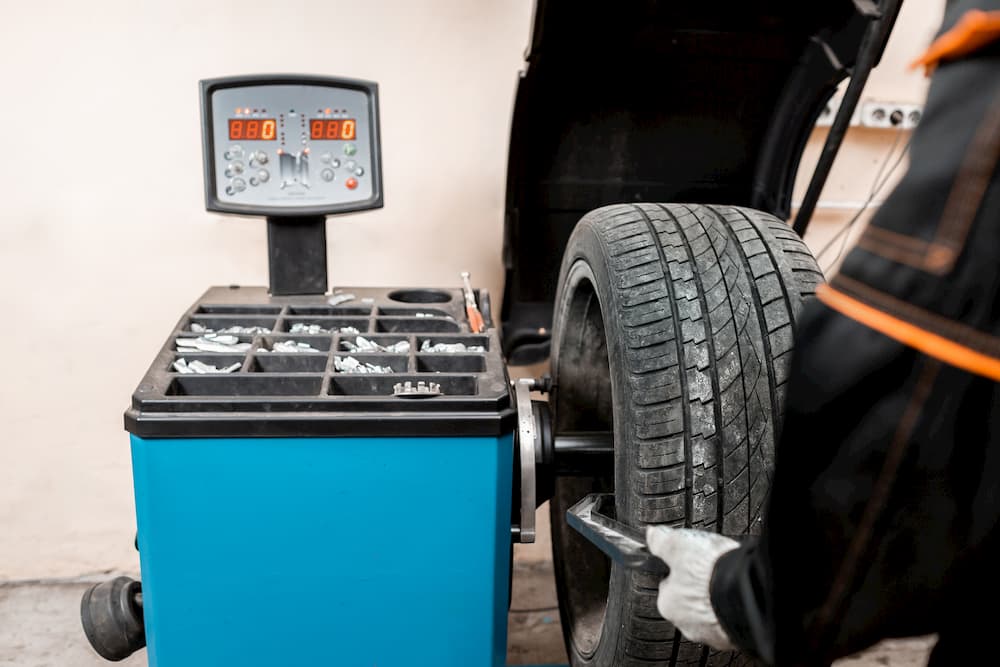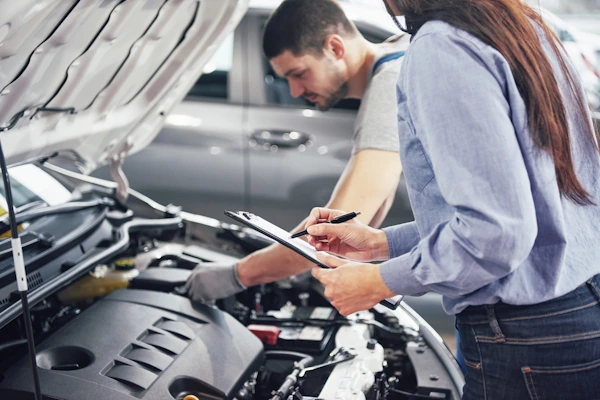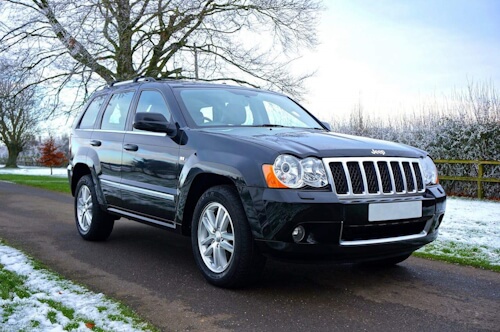Tyre & Wheel Balancing for Your Car
Balancing the wheels on your car is a critical component to getting the most out of your tyres. Not only is it essential for safety, it also makes for a smoother ride and helps to minimise tyre wear.
Keep reading to learn more about balancing your car’s wheels, before booking in your tyre balancing appointment with your local Tyrepower.

The Balancing Act
All it takes is 15 grams of uneven weight distribution for a vibration to be felt in your car. Imagine trying to get that balance right at the squat rack in the gym – it’s virtually impossible – and the chances of your tyres being mounted onto your wheels this precisely is about the same.
There are two common types of imbalance:
Static imbalance
Static imbalance occurs when there’s a heavy or light spot in the tyre. This means the tyre won’t roll evenly, and the tyre and wheel will undergo an up-and-down motion. If your car is experiencing this type of imbalance, you’ll feel a hop or vertical vibration.
Dynamic imbalance
Dynamic imbalance occurs when there is unequal weight on one or both sides of the tyre and wheel assembly. This leads to what is known as a wheel shimmy. If your car is experiencing this type of imbalance, you’ll feel a side-to-side or wobbling vibration.
Most wheel assemblies typically have both types of imbalance in varying levels. Fixing the imbalance requires spin balancing in order to create an even weight distribution. This is achieved by a technician placing counterweights on the rim’s outer surface to offset the imbalance.
When the wheel balancing system tests for (as close to) perfect weight distribution, the assembly is in balance and won’t vibrate. Your tyres will ride smoothly and wear evenly – provided there are no other issues to resolve.
How Tyre Balancing Has Changed
Tyre balancing has changed significantly over the years. This is a result of a number of factors, including the following:
The trend towards lighter vehicles
Previously, a heavier car would actually dampen the vibrations before they could be felt by the driver, smoothing the ride without any need for wheel balancing (unless it was a significant imbalance).
But in a lighter car, every bump on the road is felt – which is why precision wheel balancing has become a critical component to appropriate tyre care.
Softer suspensions
Lighter cars mean softer suspensions, which has also had a significant impact on the vibration and bouncing sensation felt by drivers should the wheels need balancing.
Advanced tyre technology
Tyres have also changed over the years. They are now typically more responsive with lower profiles, which sends more road feedback to the driver. These types of tyres do typically lead to better on-road performance, lower rolling resistance and better fuel economy; however, the slightest imbalance can be felt.
Moreover, if you’ve upgraded your tyres to larger/fatter ones, balancing is even more critical to guarantee a smooth ride.
The Importance of Keeping Your Tyres Balanced
If you want to make the most of your tyre investment, wheel balancing is critical. As you drive over time, you’ll hit bumps and holes you couldn’t see or avoid, and you’ll drive along uneven road surfaces, both of which lead to uneven treadwear. Even turning left and right particularly hard can have an effect.
After roughly 5000 kilometres it may be time to rotate your tyres. While you’re at it, it’s recommended you also get a wheel alignment service, as well as a tyre rebalancing. Checking your tyre pressure can also be beneficial. Even if you can’t always feel the vibrations mentioned above, they’re still there. Tyre imbalances can generate excessive heat and wear on your tyres, leading to the need for replacement ones far sooner than expected.
If you’re ready to arrange your car’s wheel balancing, there’s a few things to consider:
Match mounting
The high-performance tyres and wheels available today are typically made with features that facilitate optimum mounting, including marks on the tyres and wheels to better identify the run-out spot (low point) and high-point location.
Mounting your tyres to your wheels to match these two points is known as match mounting, which helps to minimise the counterweights needed to correct any imbalances.
Force variance
There are occasions where tyres have been manufactured with a slightly inconsistent sidewall stiffness. This is known as force variance, and it can lead to a ride problem.
If you’re experiencing this problem, Tyrepower can use a balancer that detects the condition, helping us to remount the tyre in the optimum position.
Wheel weight placement
Wheel designs today typically require unique weight placement to achieve both precise balance and aesthetic appeal. Different types of wheel weights are used for each type of wheel. Tyrepower can inform you of the best method for your wheel type.
Other Causes of Car Vibration
There are cases where you’ll have a wheel balancing completed, but you can still feel a vibration when driving your car. That’s because there are many causes of vibration, including the following:
Bent wheel
Tyre out of round (radial or lateral runout)
Wheel to axle mounting error
Inconsistent tyre sidewall stiffness (force variation)
Brake component wear or failure
Drive train or engine component wear or failure
Suspension wear or failure
Wheel bearing wear or failure
Wheel alignment is out
Arrange a Wheel Balancing for Your Car with Tyrepower
If you’re ready to check the balance of your tyres, or you need assistance with other tyre maintenance, get in touch with your local Tyrepower today to arrange an appointment. You can call us directly on 13 21 91.

























